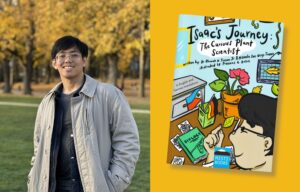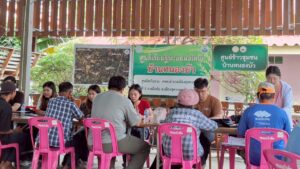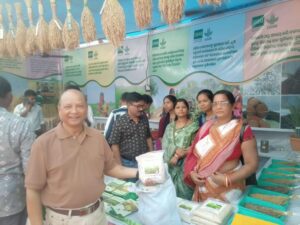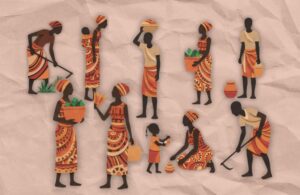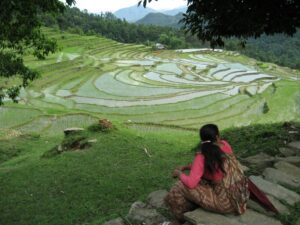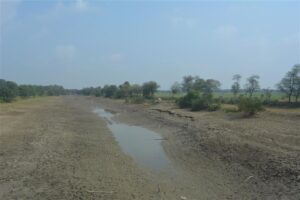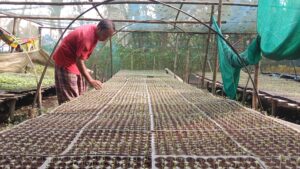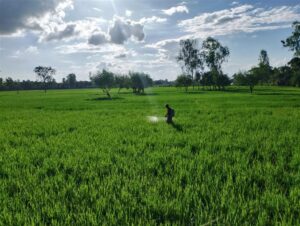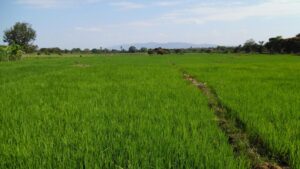Mysterious crop circles of incredible complexity that appear overnight, or a baseball park as in the 1989 film Field of dreams—who knows what you might come across in your local rural idyll these days?
But travel some 600 kilometers north of Tokyo, then take a drive off the beaten track. There, in a village in verdant Aomori Prefecture, who would ever expect to find exquisite Edo Period artworks sprouting amid a swaying green sea of enormous rice paddies?
It’s neither a dream, nor a supernatural mystery, nor fiction.
Instead, by precisely planting four varieties of rice with differently colored leaves in fields their ancestors have farmed for centuries, the people of Inakadate Village in 2007 grew remarkable reproductions of famous woodblock prints by Katsushika Hokusai (1760-1849). And this is no cheap gimmick—the images from the artist’s Fugaku Sanjurokkei (36 views of Mount Fuji) on the 15,000-square-meter paddies are nothing if not spectacular in both their scale and detail—even as every day brings them nearer to annihilation in the September harvest.
From ground level, the artistic paddies spread out before the Inakadate Village office building are, like crop circles that occur in England, invisible. However, by scaling a 22-meter-high mock castle tower that overlooks the fields, visitors are rewarded with a view that takes their breath away. The spectacle also boosts the local economy, with hundreds of thousands of visitors now drawn to the village of 8,700 people each year.
“People who see this for the first time often ask me if we made this by painting colors on green rice plants,” says Akio Nakayama, who leads the rice-paddy art project, while viewing the multicolored rice fields from the village office. Mr. Nakayama, an official in the office’s industries section, has been working on the art project for more than 10 years.
“This year’s [2007’s] Hokusai design was very challenging,” he says. “We weren’t sure if we could really pull it off—but we did.”
Inakadate Village started to create rice-paddy art in 1993 as a local revitalization project. No one will take credit for the idea, which seems to have just grown out of village committee meetings.
In the first 9 years, the village office workers and local farmers grew a simple design of Mount Iwaki in Aomori Prefecture every year, accompanied by the words “Inakadate, a village of rice culture.” Then, by planting rice varieties with different leaf colors on about 2,500 square meters of rice paddies, they quite literally brought their designs to life. But, as time went by, the locals’ horizons widened and the pictures they tried to transform into fields of art became ever more complicated. Not surprisingly, over the years, more and more people also began to pay attention to their extraordinary endeavors.
Then, in 2005, after agreements between landowners allowed the creation of enormous, 15,000-square-meter rice paddies, the villagers painstakingly plotted their planting on paper plans and created huge-scale reproductions of Edo Period ukiyo-e works by Sharaku and Utamaro.
That year, around 130,000 visitors sought out this beautiful backwater to marvel at the arable artwork.
In 2006, another revolution occurred in this creative corner of the northernmost prefecture of Honshu, the largest of Japan’s islands, when the organizers for the first time used computers to precisely plot the planting of the four differently colored rice varieties. The result was an astonishing set of reproductions of paintings from the famous Fujin (God of the Wind) by the early Raijin Zu Byobu Thunder God screens Edo Period artist Tawaraya Sotatsu. Around 200,000 visitors came to Inakadate to view the images.
________________________________________________________________________________


